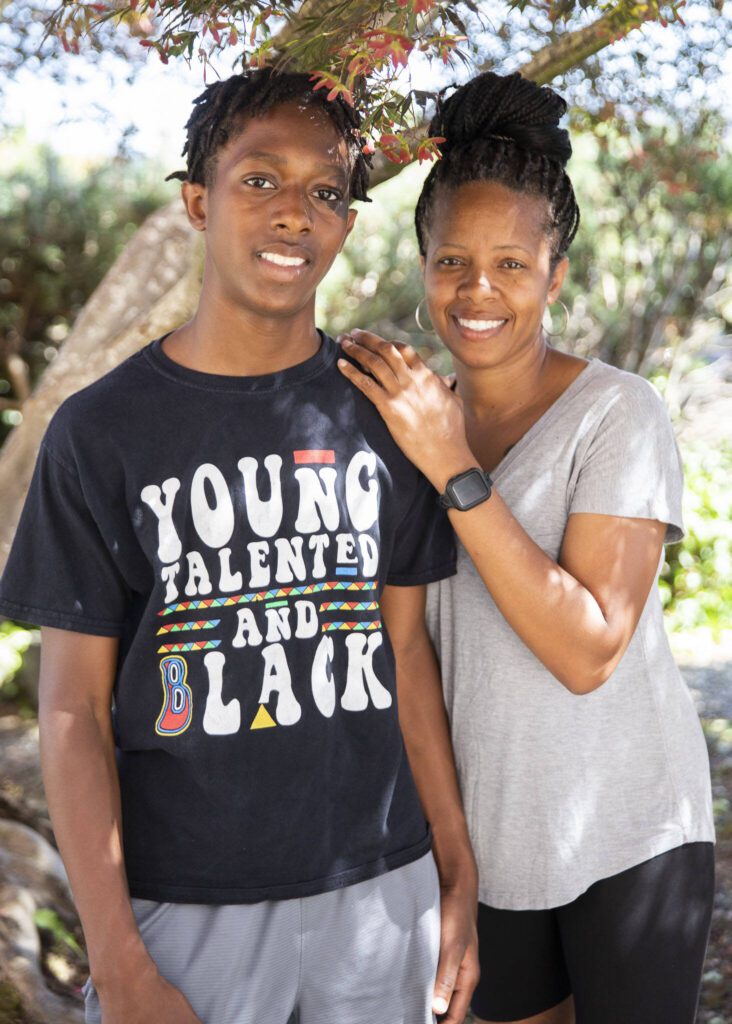MONROE — Jayden Hill, 15, first got a cellphone in fifth grade.
For a few years, it was a great way to coordinate pick ups with his family.
But in seventh grade at Park Place Middle School in Monroe, he started checking his phone in class.
Whenever that happened, an app alerted his mother, Junelle Lewis, who punished him by taking his phone away at home.
Two years later, Hill said he can control himself with his phone.
“My grades get are getting better, and I’m able to focus more,” he said.
In late June, the Monroe school board approved restricting cellphone use for students in the district. Coming this fall, elementary and middle school students will only be allowed to use them before and after school. During school hours, devices have to be silenced and locked away.
High school students will be able use their phones at lunch and in the minutes between periods. In class, phones must be silenced. Everett Public Schools already follows a similar policy.
District officials have spent months surveying parents, staff and students on the new policy. The results showed the community agreed phones can be detrimental to education, but some parents and students are concerned the ban will take away important freedoms and impact students with disabilities.
Officials are still finalizing implementation details.
The ban annoys Hill, like many of his fellow students, but he sees a practical impact. He said current phone policies aren’t applied equally and don’t address how phones are used to bully others.
Before the updated policy, each school and often each teacher set their own rules for their classroom, said district spokesperson Erin Zacharda.
“Our goal is to create uniformity across the district and within individual schools,” she said.
Phone bans are gaining in popularity across the nation as a way to control bullying and distractions.
Last year, Florida lawmakers passed a bill requiring school districts to ban cellphone use in class.
In Washington, Spokane Public Schools will also implement a ban in the fall.
For inspiration, Monroe school board director Jeremiah Campbell said the district is looking to the Peninsula School District in Kitsap, where students can only use phones at lunch, with exceptions for emergencies.
“They have been one of the major school districts that has kind of led the way,” Campbell said. “There’s a lot of districts that are moving in this direction.”
Elsewhere in Snohomish County, the Mukilteo School District used to have a strict policy, requiring students to turn off devices during school, except in an emergency situation. The policy gave school leaders authority to check student cellphones for bullying or sexually explicit photos or messages.
Now, school principals decide how to manage their school’s cellphone policy. Some are more restrictive than others, and some teachers may collect phones during class while others do not, spokesperson Diane Bradford said.
‘Proactive rather than reactive’
Lewis, who has eight children aged 14 to 23, has witnessed how central technology has become in education.
To her, the problem is not technology, but how students use it.
“The actual device sitting here, right here is not a problem,” said Lewis, who ran for Monroe City Council last year. “It’s the lack of their maturity, right? Because their brains aren’t fully developed, and their inability to manage it.”
Lewis said phones make it really easy to bully and hard to investigate who did it.
A few years ago, one of her children received a video through Airdrop that made fun of another student using the bathroom.
“It’s just a lot of damage,” she said. “We want to be proactive, rather than reactive.”
Heather Young, another parent in the district, confirmed phones are used to bully.
But she’s concerned how the ban will affect students with disabilities and those on an Individualized Education Program, 504 Plan or Individual Healthcare plan.
Young’s younger son has speech difficulties and benefits from having his mother a phone call away.
Before he had a phone, he would get very frustrated if his teachers didn’t understand him.
“Whereas now, if he calls and I can help clarify and basically play interpreter, we avoid those kinds of escalations completely,” she said. “Sometimes it’s used as an incentive. Sometimes it’s used to avoid a meltdown.”
Campbell said exceptions will be carved out on a case-by-case basis.
For some students, access to electronic devices is protected by state law and federal law.
Young worries the process to get an exception will be arduous.
“Why not have it be part of the rule that says phones can be used in the following ways?” she said. “Because then you’re not making individual families have to go and petition for this thing.”
Campbell disagrees, saying the phone ban exceptions will be discussed in students’ existing IEP meetings.
He is expecting students to resist the change.
His own son, who is in high school, disapproves.
“Thanks dad,” he told Campbell. His daughter is more positive.
“It’s a restrictive policy,” Campbell said. “You’re going to expect people to not be happy. But again, the job of a school board is not to make everybody happy. It’s to create the environment that we can have our students find success.”
He predicts students will look for ways to outsmart the ban.
Professional development and training for staff will be crucial to implementing the ban, he said. The policy can always be adjusted after experimenting with it.
But he thinks in a few years, the phone ban will lead to higher grades, better self-discipline and happier students.
Aina de Lapparent Alvarez: 425-339-3449; aina.alvarez@heraldnet.com; Twitter: @Ainadla.
Talk to us
> Give us your news tips.
> Send us a letter to the editor.
> More Herald contact information.


























